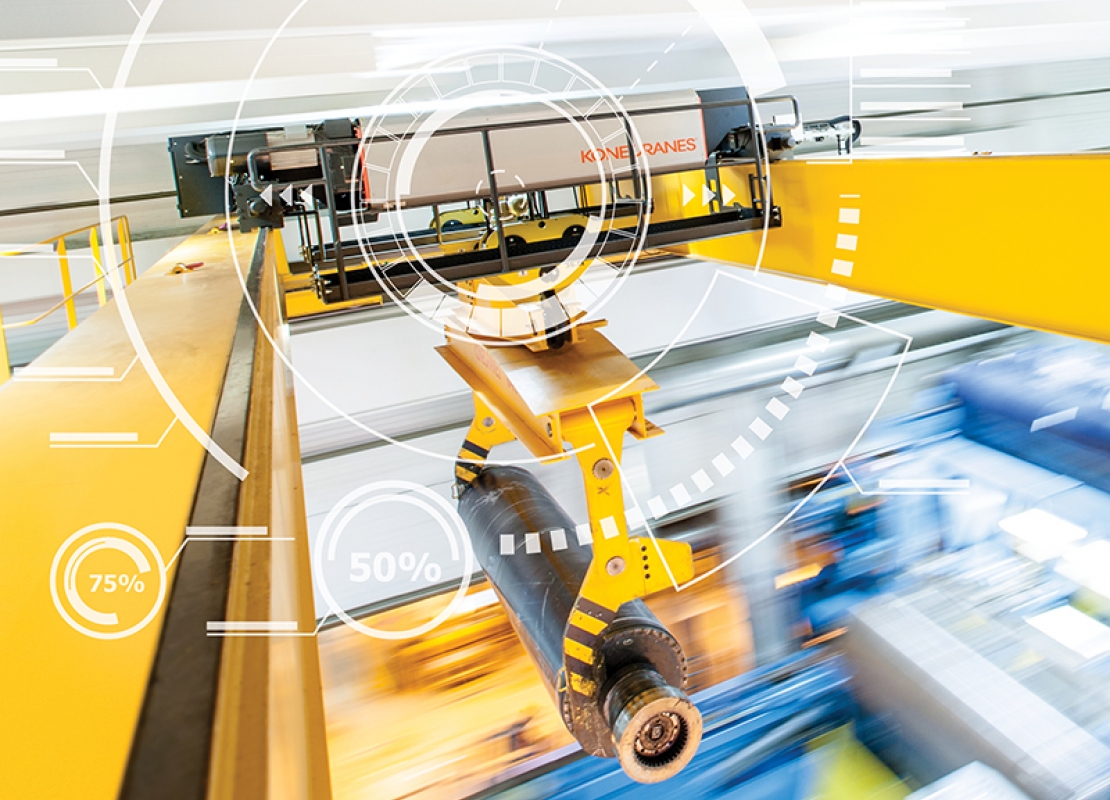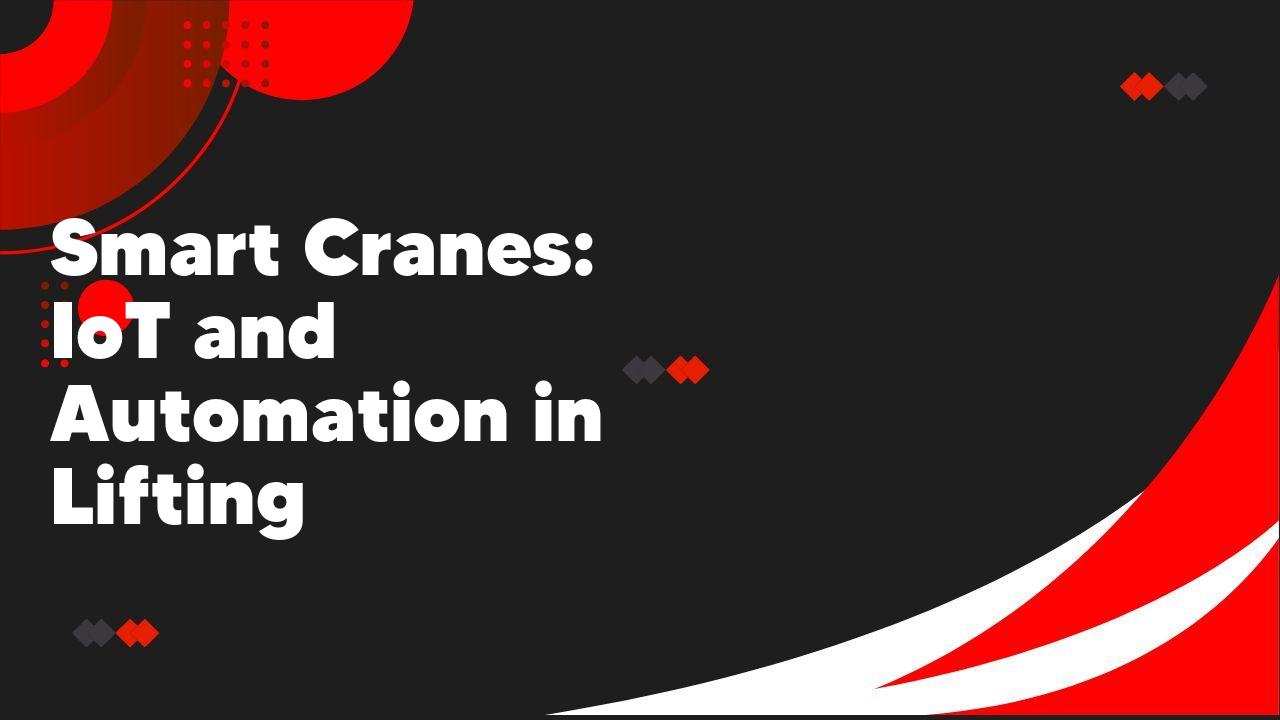In recent years, the integration of Internet of Things (IoT) technology and automation has revolutionized various industries, and the lifting industry is no exception. Smart cranes, equipped with sensors and connected to a network, are transforming the way heavy lifting is done. This article explores the benefits and applications of IoT and automation in lifting, highlighting the advancements in safety, efficiency, and productivity that smart cranes bring to the table.
The Rise of Smart Cranes: How IoT and Automation are Revolutionizing the Lifting Industry
The lifting industry is undergoing a significant transformation with the rise of smart cranes. Thanks to the Internet of Things (IoT) and automation, these cranes are becoming more intelligent and efficient than ever before. IoT technology allows cranes to be connected to a network, enabling real-time data collection and analysis. This data can be used to optimize crane performance, improve safety, and reduce downtime. Automation further enhances the capabilities of smart cranes by enabling them to perform tasks autonomously, without the need for human intervention. This revolution in the lifting industry is increasing productivity, reducing costs, and improving overall efficiency.
Harnessing the Power of IoT: How Smart Cranes are Enhancing Efficiency and Safety

Smart cranes are revolutionizing the construction industry by harnessing the power of the Internet of Things (IoT). These advanced machines are equipped with sensors and connected to a network, allowing them to collect and analyze data in real-time. This data can be used to optimize crane operations, enhance efficiency, and improve safety on construction sites. Smart cranes can monitor factors such as load capacity, wind speed, and crane stability, providing operators with valuable insights to make informed decisions. By leveraging IoT technology, construction companies can reduce the risk of accidents, increase productivity, and ultimately save time and money.
Automation in Lifting: Exploring the Benefits and Challenges of Smart Crane Technology
Smart crane technology has revolutionized the lifting industry by introducing automation into the process. This technology offers numerous benefits, including increased efficiency, improved safety, and reduced labor costs. With automated features such as object detection and collision avoidance, smart cranes can operate with precision and accuracy, minimizing the risk of accidents and damage to goods. Additionally, these cranes can be remotely controlled, allowing operators to work from a safe distance and reducing the need for physical labor. However, the implementation of smart crane technology also presents challenges, such as the need for skilled operators to manage and maintain the automated systems. Overall, the benefits of automation in lifting outweigh the challenges, making smart crane technology a valuable asset in various industries.
From Manual to Automated: The Evolution of Cranes in the Age of IoT
In the age of IoT, cranes have undergone a significant transformation from manual to automated systems. This evolution has revolutionized the construction industry by improving efficiency, safety, and productivity. Manual cranes required skilled operators to control their movements, which often led to human errors and accidents. However, with the integration of IoT technology, cranes can now be remotely controlled and monitored, reducing the need for human intervention. IoT sensors and data analytics enable real-time monitoring of crane performance, allowing for predictive maintenance and minimizing downtime. Additionally, automated cranes can optimize their movements and load handling, resulting in faster and more precise operations. Overall, the shift from manual to automated cranes has brought about a new era of efficiency and safety in the construction industry.
IoT-enabled Lifting: How Smart Cranes are Transforming Construction and Industrial Operations
Smart cranes, enabled by the Internet of Things (IoT), are revolutionizing the construction and industrial operations sectors. These advanced cranes are equipped with sensors and connected to a network, allowing them to collect and transmit real-time data. This data includes information on crane performance, load capacity, and maintenance needs. By analyzing this data, operators can optimize crane usage, improve safety, and reduce downtime. Additionally, smart cranes can be remotely controlled and monitored, allowing for increased efficiency and productivity. With the ability to automate tasks and provide valuable insights, IoT-enabled cranes are transforming the way construction and industrial operations are conducted, leading to cost savings and improved overall performance.
The Future of Lifting: Unleashing the Potential of IoT and Automation in Crane Technology
The future of lifting is set to be revolutionized by the integration of IoT and automation in crane technology. With the advent of smart sensors and connected devices, cranes will become more intelligent and efficient than ever before. These advancements will enable real-time monitoring and analysis of crane performance, allowing for predictive maintenance and minimizing downtime. Additionally, automation will streamline operations, reducing the need for manual intervention and improving safety. The integration of IoT will also enable remote control and monitoring of cranes, allowing operators to manage multiple machines from a centralized location. Overall, the future of lifting looks promising with the potential of IoT and automation in crane technology.
Conclusion
In conclusion, smart cranes are revolutionizing the lifting industry by incorporating IoT and automation technologies. These advancements have greatly improved efficiency, safety, and productivity in construction and other industries that require heavy lifting. As the technology continues to evolve, we can expect to see even more innovative features and benefits from smart cranes in the future.
What is IoT?
IoT stands for Internet of Things. It refers to the network of physical devices, vehicles, appliances, and other objects embedded with sensors, software, and connectivity, enabling them to connect and exchange data.
How does IoT relate to smart cranes?
In the context of smart cranes, IoT allows these machines to be connected to the internet and gather data from various sensors and devices. This data can then be analyzed and used to optimize crane operations, improve safety, and enhance efficiency.
What are the benefits of using smart cranes?
Using smart cranes brings several benefits, including increased productivity, improved safety, reduced downtime, and enhanced operational efficiency. These cranes can also provide real-time data and analytics, allowing for better decision-making and predictive maintenance.
What is automation in lifting?
Automation in lifting refers to the use of technology and machinery to perform lifting tasks without human intervention. This can include automated cranes that can operate independently or with minimal human input, using sensors, algorithms, and control systems.
How does automation in lifting improve efficiency?
Automation in lifting improves efficiency by reducing the need for manual labor, minimizing human error, and optimizing the use of resources. Automated cranes can perform tasks faster and more accurately, leading to increased productivity and cost savings.
Are there any challenges or risks associated with smart cranes and automation in lifting?
While smart cranes and automation in lifting offer numerous benefits, there are also challenges and risks to consider. These include cybersecurity threats, potential job displacement, and the need for proper training and maintenance. It is important to address these issues to ensure the safe and effective implementation of these technologies.

